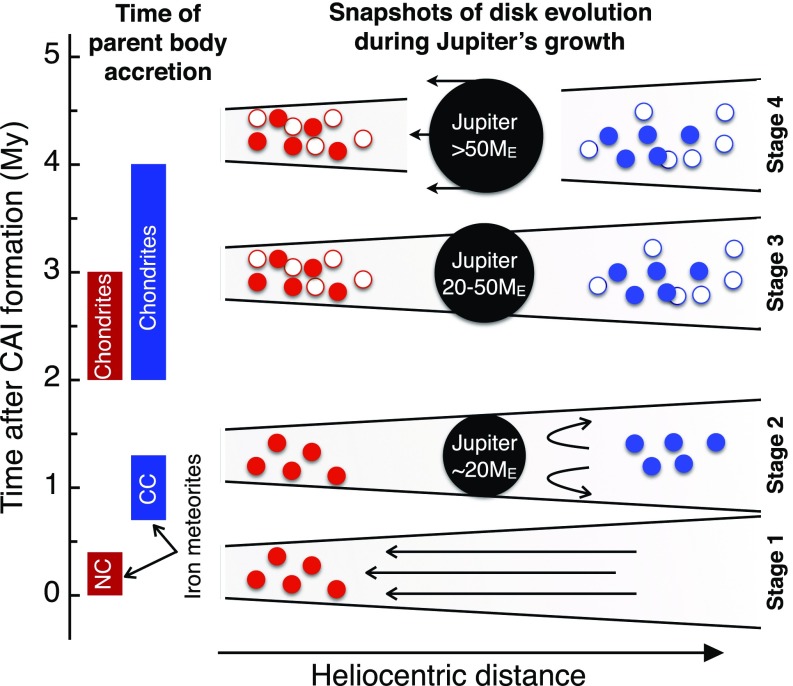Fig. 4.
Four snapshots of Jupiter’s growth in the solar circumstellar disk. At stage 1, within <0.4 My after CAI, the NC iron meteorite parent bodies (red solid symbols) accreted in a continuous gas disk characterized by inward drag of solids. At stage 2, around ∼1 My after CAI, iron meteorite parent bodies of the CC reservoir (blue solid symbols) had accreted and Jupiter had already grown to ∼20 ME, preventing any inward drag of solids (24). At stage 3, from ∼2 My to ∼4 My after CAI, Jupiter grew further through gas accretion onto its core. Moreover, the ordinary chondrite parent bodies (red open symbols) accreted in the NC reservoir and CC chondrite parent bodies (blue open symbols) in the CC reservoir. At stage 4, after ∼3–4 My after CAI, Jupiter had grown to ∼50 ME and had opened a gap in the disk (13, 23, 24), likely resulting in the inward migration of Jupiter. Solid boxes (Left) show the accretion ages of iron meteorite and chondrite parent bodies in the NC and CC reservoirs (see CC and NC Iron Meteorites).

